Tapioca flour aka tapioca starch is a type of starch, and when used in cooking it has many benefits. It can be used as an egg replacer, to create crispy fried foods, or to make gluten-free bread like challah bread.
Tapioca flour is also often added to recipes for things like cornbread and brownies for its moistening properties.
However, there are some times when you just don’t have any tapioca flour on hand because it’s not always stocked in grocery stores alongside the other common flour.
You might think that there aren’t any substitutes for tapioca flour available, but I have compiled a list of 15 different ingredients that you can try out instead of tapioca flour!
Table of Contents
15 Best Tapioca Flour Substitutes for Thickening, Baking, and Frying
The best substitutes for tapioca flour are cornstarch and arrowroot powder. You can also use potato starch, rice flour, and eggs as tapioca starch substitute in most recipes.
Read on for the best tapioca flour substitutes and how you can use them in your recipes.
1. Cornstarch
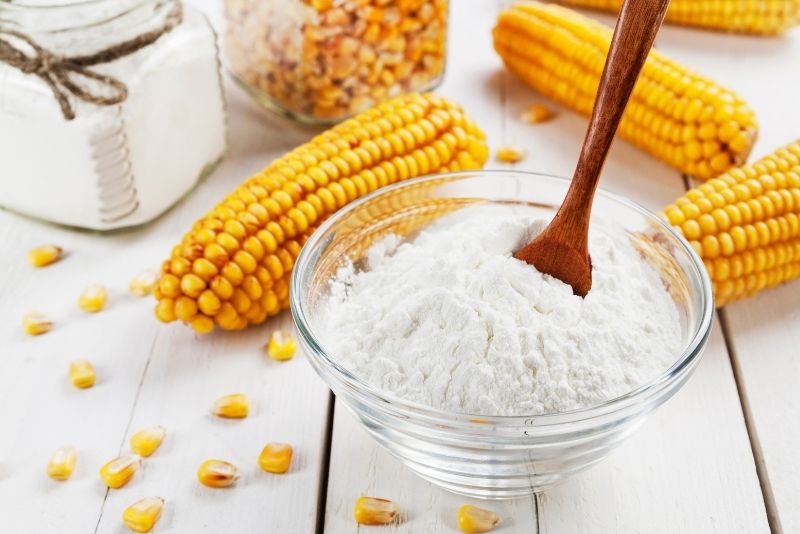
This might be the most common substitute for tapioca flour and something you might already have lying around in the kitchen.
Similar to tapioca starch, cornstarch comes from a plant and is also an incredibly common thickening agent used to make sauces.
However, since cornstarch is a stronger thickener than tapioca flour, it’s best to use only half the amount or as follows:
3 tablespoons of tapioca flour = 2 tablespoons cornstarch
Bonus: Cornstarch is gluten-free and is not an allergen or unsafe for those with Celiac Disease.
It can be found in most grocery stores, making it the easiest tapioca flour substitute to purchase.
2. Arrowroot Powder
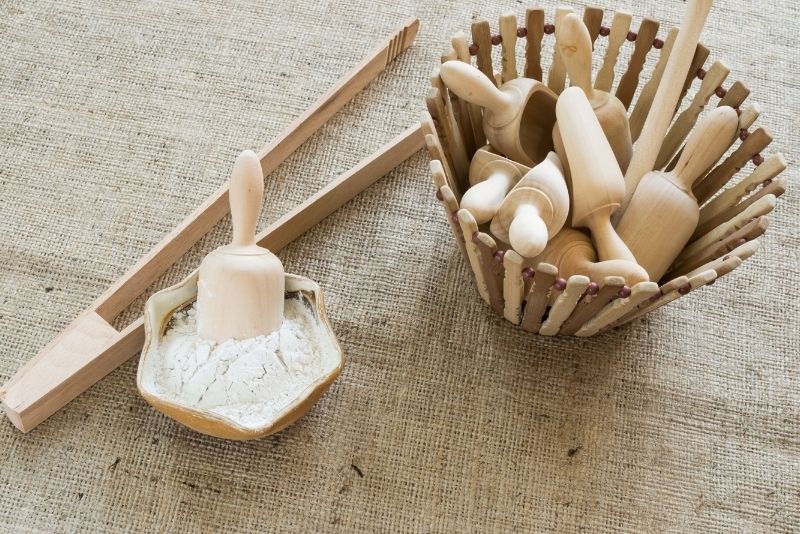
Arrowroot powder is another favorite substitute for tapioca starch and is something that can be used in a variety of situations.
Arrowroot powder is made from the roots of the arrowroot plant and has a different texture than cornstarch, but it’s a common thickening agent substitute for tapioca flour.
It’s often used to make sauces, gravies, pie fillings, and jellies.
However, if you’re using Arrowroot powder as a substitute for baking, make sure to mix it with some other flour or starch. Otherwise, it’ll make your baked good too dense.
3. Potato Starch
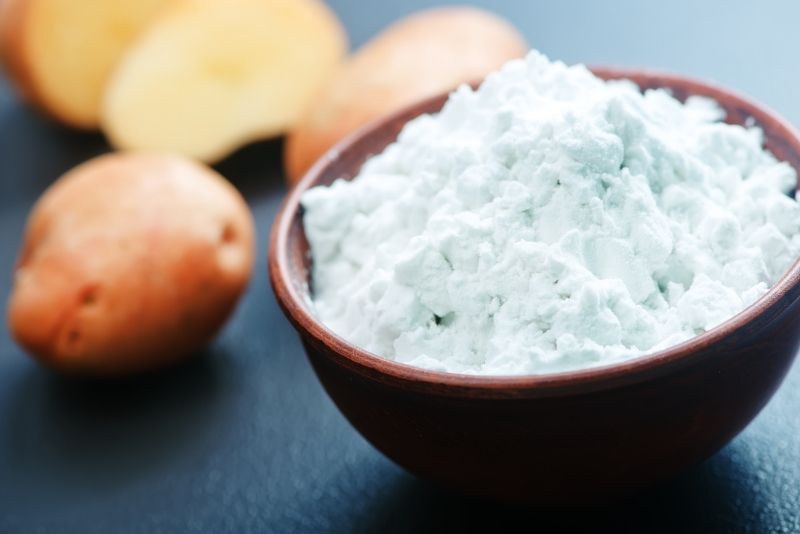
Potato starch is a great tapioca alternative for cooking foods like fried potatoes or French fries.
It’s made from potatoes and is a great thickener that comes in handy when cooking or baking. Since it’s good at absorbing water effectively, it’s great for making things like gravy and sauces as well.
Potato starch is also gluten-free and can be found in most grocery stores.
4. Rice Flour
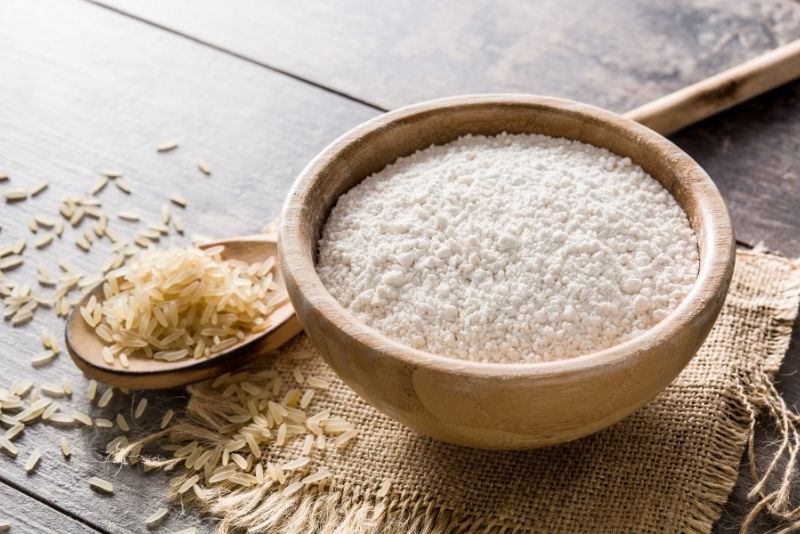
Rice flour can easily be used as a substitute for tapioca flour. It’s often used to make gluten-free bread and other baked goods.
You can substitute 1/4 cup of rice flour for every 1/4 cup of tapioca starch you’d use in your recipe.
Rice flour is sometimes made from white or brown rice, but many times it’s made from sweet rice and isn’t an accurate substitute for regular white rice.
Rice flour can be found in most grocery stores, making it the easiest tapioca starch substitute to purchase and use when you’re in a hurry.
5. Breadcrumbs
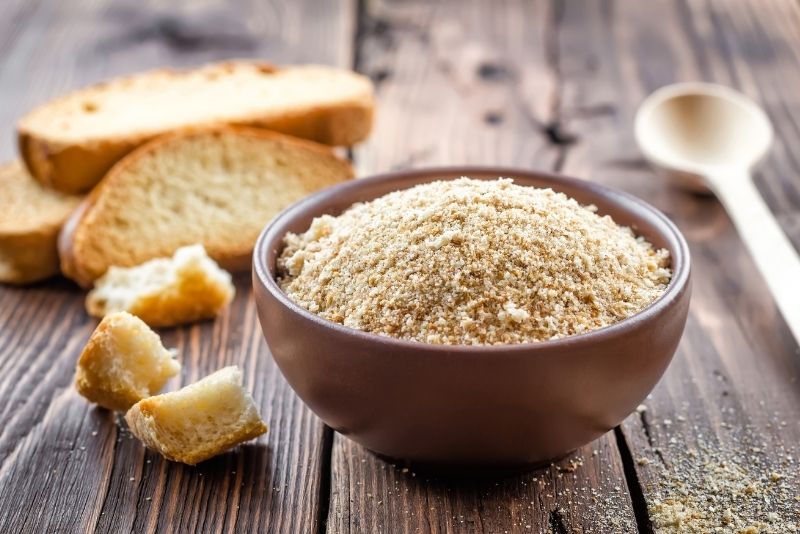
Breadcrumbs are an easy addition to any recipe that is looking for something to thicken it up! They work as a great substitute for tapioca starch in most recipes.
Breadcrumbs are made from stale bread but you can also make your own at home with fresh bread or crackers that have been ground up into crumbs.
Breadcrumbs aren’t a good option for everyone because some people may be allergic to wheat, so check with your doctor before you make the switch.
6. Arrowroot Starch
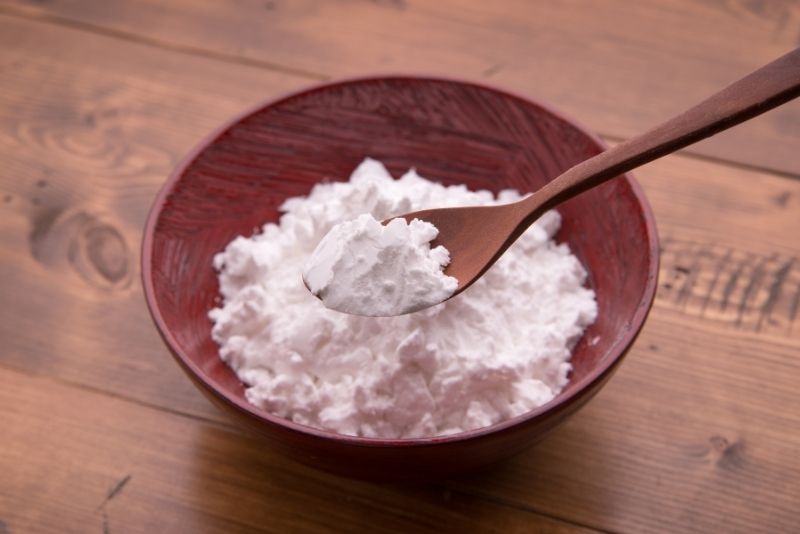
Arrowroot starch is extremely similar to arrowroot powder in that it’s made from the root of the arrowroot plant, but sometimes it can be labeled as arrowroot flour on ingredients labels.
They’re very similar in texture and thickness except for a little finer grain texture than arrowroot flour.
Mix arrowroot starch with a little water and it’ll thicken just like arrowroot powder.
Arrowroots are great for making sauces, gravies, pie fillings, jellies, and other items that need to be thickened up regularly while cooking or baking.
7. Cassava Flour
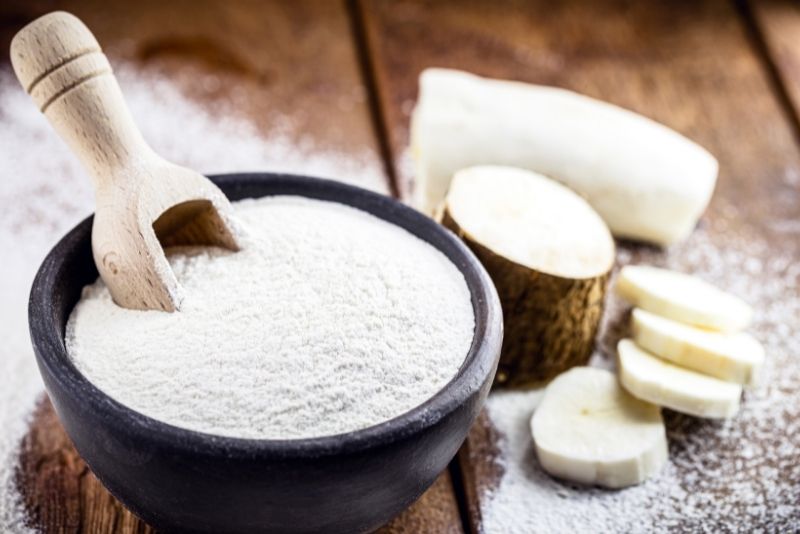
Cassava flour is a great thickener and can be used as a replacement for tapioca starch. It’s excellent for baking bread, cakes, and other baked goods that don’t need to rise or be fluffy.
Cassava flour is easy to find at most grocery stores because it’s also made from cassava roots just like tapioca flour is.
However, cassava flour has a higher fiber content which gives it more thickening power. So, when thickening, it’s better to use a lesser quantity of cassava flour than you would tapioca flour.
8. Cornmeal Flour
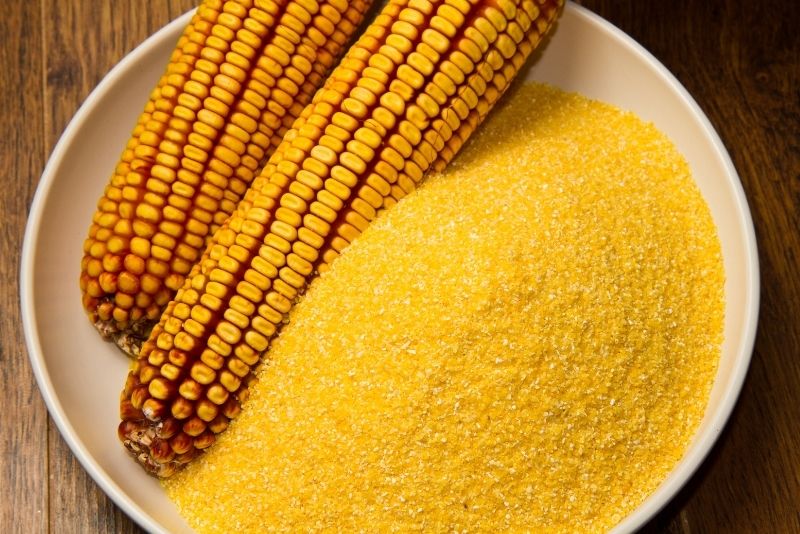
Cornmeal flour is another great thickener that can be used as a substitute for tapioca starch in baking and frying oils.
It’s often mixed with other ingredients like cornstarch or all-purpose flour to get the right consistency when baking.
Cornmeal flour can be used in dishes like cornbread, flatbread, and pancakes.
However, it’s best to use it in recipes where the thicker texture won’t make the finished product grainy since it does have a coarser texture than tapioca flour.
9. Chickpea Flour
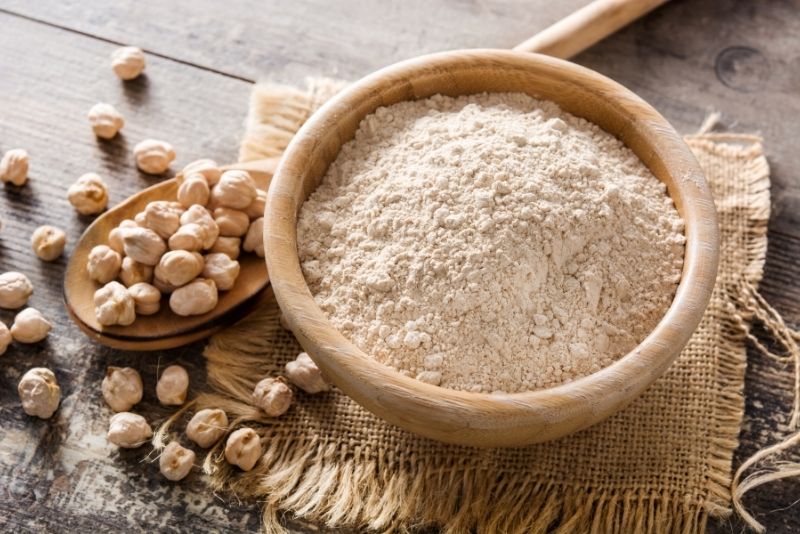
Chickpea flour is also known as garbanzo bean flour, and it’s a great thickener that gives whatever you’re cooking or baking an extra boost of protein at the same time. It makes a great substitute for tapioca flour in baking or frying.
Chickpea flour works best in combination with other ingredients like tapioca starch and all-purpose flour when making baked goods like bread, cakes, cookies, etc. because it gives them a little more moisture.
If left to stand alone for too long, chickpea flour can get clumpy and lumpy, which can be difficult to dissolve if added to a liquid too early.
10. Xanthan Gum
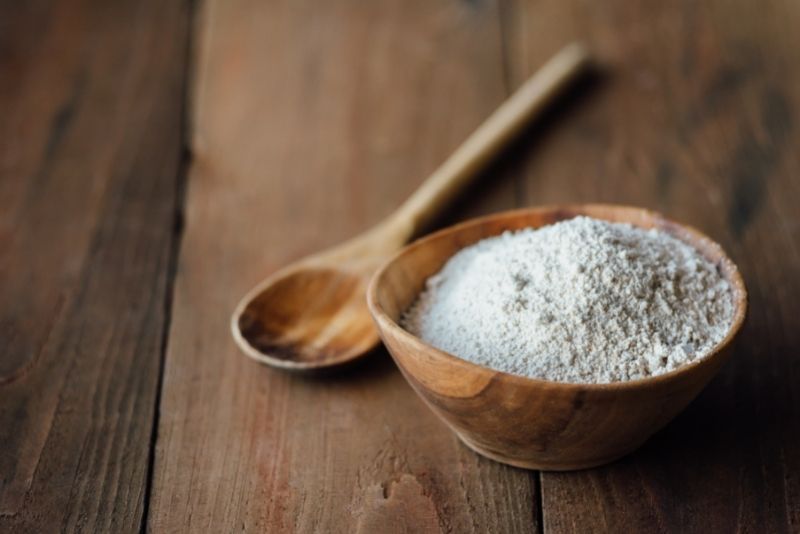
Xanthan gum is made from fermented sugar and isn’t always gluten-free because it’s often processed in factories that work with wheat products.
It’s a thickening agent that works well on its own or as a substitute for other thickeners like tapioca flour.
It does not have as thick of a texture as tapioca flour and works best in combination with other ingredients to give whatever you’re baking or cooking some extra body, moisture, and smoothness.
Xanthan gum also adds structure and elasticity to foods so that they hold their shape while frozen or at room temperature for longer periods of time.
Xanthan gum is a great thickener for sauces, gravies, and salad dressings because it adds body to whatever you’re making so that it’s not as thin and watery. It also gives foods a rich mouthfeel without adding heavy ingredients like cream or oil.
11. Chestnut Flour
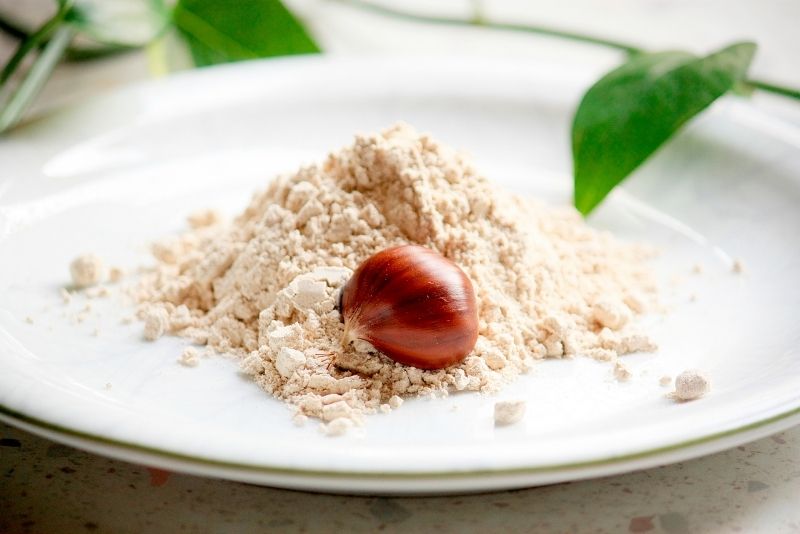
Chestnut flour is another great thickening agent that replaces tapioca starch in a gluten-free baking recipe. It works in a variety of different cooking and baking recipes like bread, cakes, cookies, muffins, etc.
The unique thing about chestnut flour is that it’s not made from the nut or fruit of the chestnut tree. It actually comes from the chestnut’s seed, which is ground into a fine powder then cooked to soften it for baking.
Chestnut flour has a very subtle, sweet flavor that gives foods a smooth and soft texture.
While chestnut flour is a good thickener for recipes, it’s best used in combination with other ingredients like all-purpose flour when baking loaves of bread or cakes.
12. All-Purpose Flour
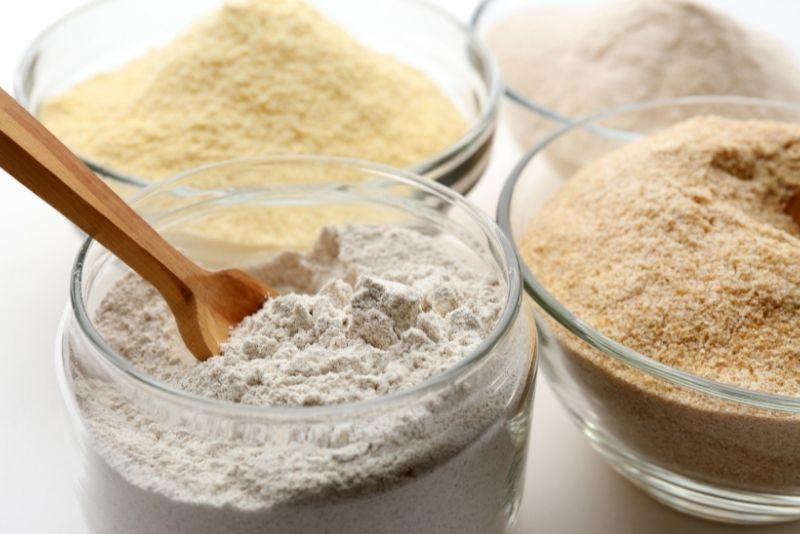
All-purpose flour is another thickener that is often used in combination with other ingredients like cornstarch or arrowroot as a replacement for tapioca. It’s an all-around great thickening agent that works well when baking bread, cakes, cookies, etc.
All-purpose flour has a coarser texture than tapioca and is best used in recipes where thickness isn’t really an issue, like pancakes or cookies.
All-purpose flour is also great for coating meat before frying because it gives foods a nice golden brown color without overcooking them.
It’s also a good flour to use when dredging meat or vegetables before frying because it gives foods a nice light coating without making them too heavy.
It can sometimes be difficult to find brands of all-purpose flour that are 100% gluten-free, so it’s best to check the labels before you buy.
When buying all-purpose flour, it’s a good idea to look for one that is labeled as “unbleached,” which will give your finished product a whiter color.
Some brands of unbleached flour are made from only whole wheat, so make sure to check the label carefully.
13. Potato Flour
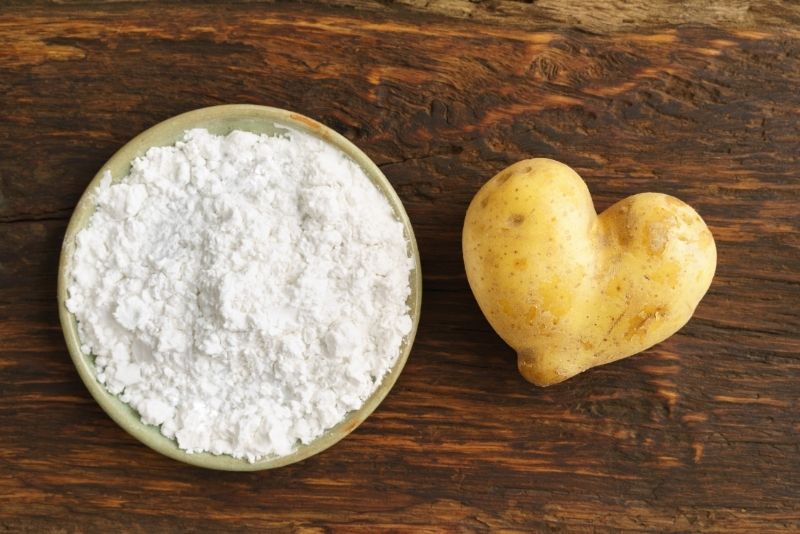
Potatoes are one of the most versatile ingredients you can have in your pantry, and potato flour is no exception.
It’s an excellent thickening agent that you can use in a wide variety of recipes including soups, stews, gravies, sauces, salad dressings, and even bread.
It’s also gluten-free like tapioca flour and is made from the fiber of potatoes rather than their starch. This means that potato flour will give your baked goods more moisture and elasticity as well as a smooth and creamy texture.
Potato flour is also good for dredging poultry, fish, and beef before frying because it gives foods a light coating that will brown them quickly without overcooking them.
14. Eggs

Eggs are one of the most versatile ingredients in your kitchen. They can be used to thicken sauces, bake cakes, and they’re also a great binder when you’re making meatloaf or meatballs.
So, if you’re comfortable with using eggs or collagens, they can become an easy alternative to tapioca starch.
There are different ways that eggs can be added into recipes depending on how much structure and thickening you need.
If you’re making soups or sauces, it’s best to add whole eggs in their shells. You can crack them into the recipe right before you finish cooking so that they cook through and don’t add any moisture to the recipe.
If you need a small amount of thickening for your recipes, then you can separate egg whites from the yolks, whip the whites into a foam and then add them to your recipe. This will act as a thickener without adding any unwanted moisture or calories to your recipe.
15. High-Starch Vegetables
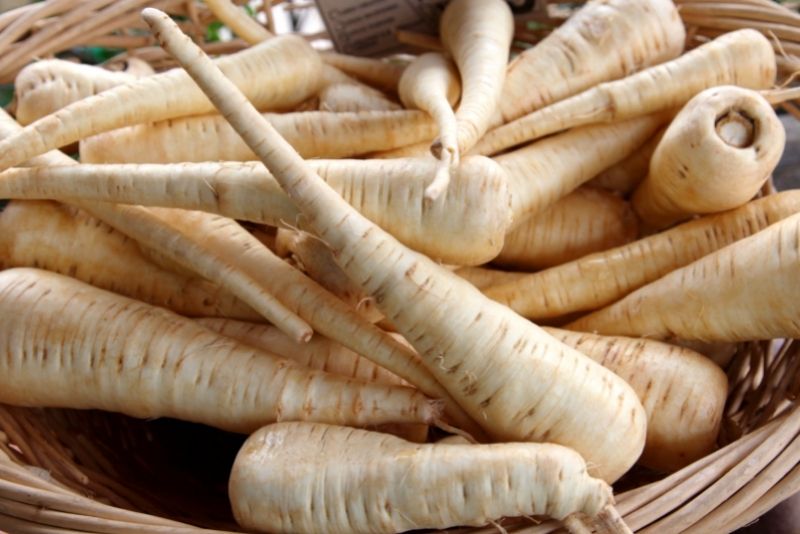
If you’re making a recipe that needs to be thickened but also has a lot of moisture in it, then high-starch vegetables like parsnips or potatoes can be used as an alternative to tapioca starch.
Just add them into the recipe and simmer for 20 minutes or so; the starches will begin breaking down and thickening the recipe.
What is Tapioca Flour?
Tapioca flour is a type of starch that comes from the cassava root. The cassava plant grows in tropical climates but not all over the world, so tapioca flour can be hard to find at times.
In appearance, like most flours, tapioca flour is a fine, white powder. This is how it looks:
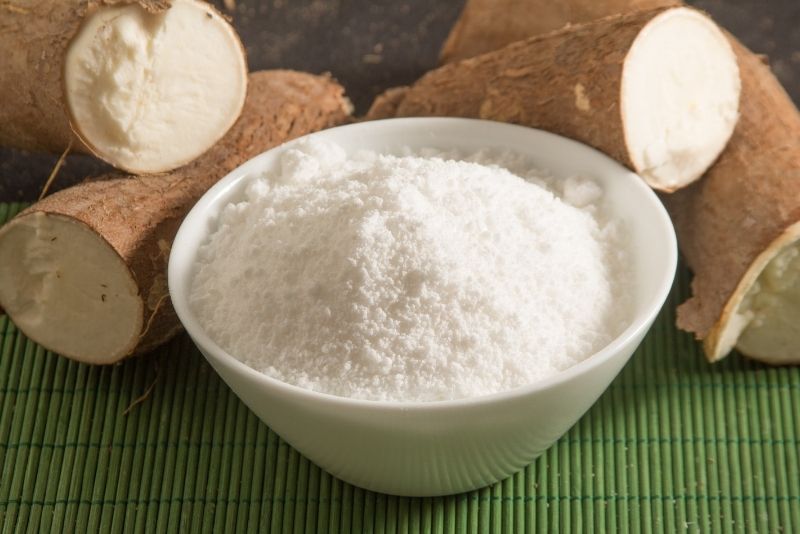
It’s often used in recipes for making things like thickening agents, breading, and fried foods.
Tapioca flour is similar to cornstarch except for a little bit lighter and more translucent looking.
(Please note: Tapioca flour will often appear as tapioca starch on ingredients labels.)
Tapioca Flour Uses
Tapioca flour is popularly used in recipes that need to have ingredients stuck together or are needing to be deep-fried. It is also used in recipes that need to be thickened into a gooey substance, especially when baking.
Frequently Asked Questions:
Where can I buy tapioca starch?
You can find tapioca starch in most grocery stores. You may have to visit an Asian grocery store or health food store for a wider selection. You can also buy tapioca flour online through sites like Amazon and eBay.
Who should not eat tapioca?
Tapioca flour is considered to be safe for most people, but it may cause allergic reactions in some individuals with gluten sensitivity.
If you are unsure of whether or not your tapioca flour is gluten-free, it’s best to check the ingredients label or contact the manufacturer before consuming.
Can I make tapioca starch at home?
If you grow cassava plants, then you can easily make tapioca starch at home. Just grind the roots and then sift out the finest particles to be dried. It is as simple as that!
Is tapioca starch the same as tapioca flour?
Yes, tapioca starch and flour are essentially the same things. In terms of appearance, tapioca is a very fine, powder-like flour that’s actually pure starch which causes this naming confusion.
On food packaging, you might find the names to be different but know that you’re getting the same thing underneath.
Are cornstarch and tapioca flour the same?
A big NO. Cornstarch and tapioca starch are two very different things. Cornstarch is made from the endosperm of corn kernels and tapioca flour is made by removing the starch from cassava tubers.
Final Words
So, there you have it! 15 of my favorite substitutes for tapioca flour that will come in handy no matter what kind of recipe or dish you’re making.
Hopefully, you found this post helpful.
Do you have any questions or comments? Leave them below and I’ll get back to you as soon as I can.